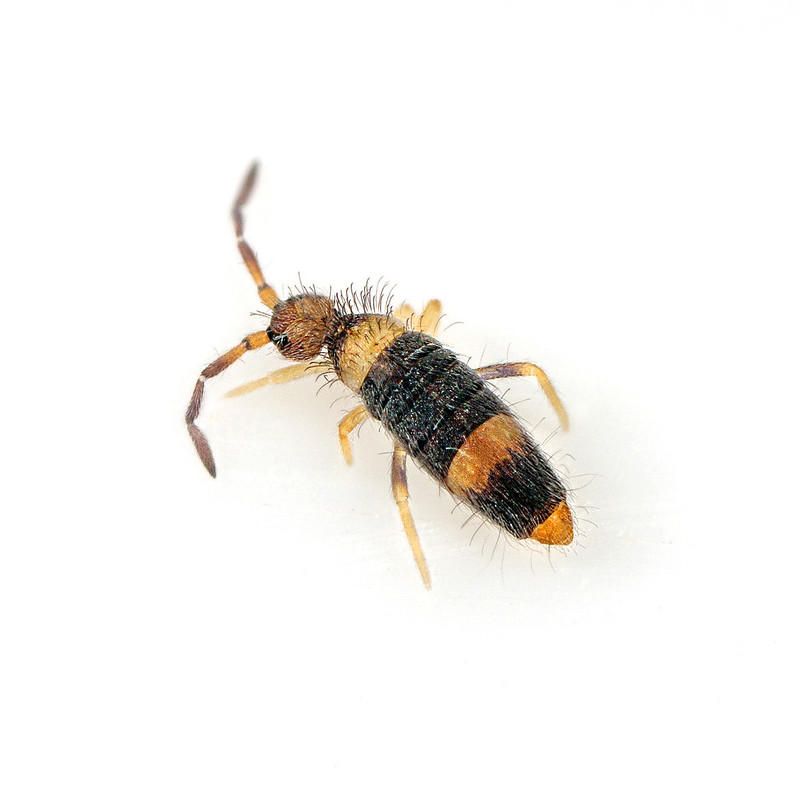I received a tip-off that there was a big bloom of springtails at Thornton Reservoir. Because of the low rainfall over the winter water levels were very low and springtail numbers had exploded on the exposed mud. Unfortunately I was not able to get there quickly, and the following week was mostly gales, falling trees and torrential rain so by the time I did get on site the water level had risen several feet and most of the mud was underwater. However, there were still good numbers of Isotomids under rock by the waterline. These turned out to be
Isotomurus palustris sensu lato - near continuous dorsal line and fainter lines on the sides of the abdomen (juveniles paler); mucro with four teeth, apical tooth smaller than the others and no lateral seta:

Also present were large numbers of
Paranchus albipes. This is an interesting beetle which is very much a water line specialist, following the water level up and down. It's also one of the specialist springtail predators, numbers having exploded based on the food supply:

Because it was a nice day I took a walk around the reservoir and sampled under the bark of a Scots Pine as well as from Ivy growing up trunk because this was a good contrast to the mad at the waterline at the other end of the reservoir. Nothing surprising here, lots of
Entomobrya nivalis, but also probably more
Entomobrya albocincta than I have seen in a sample:
 Entomobrya albocincta
Entomobrya albocincta
 Entomobrya nivalis
Entomobrya nivalis








